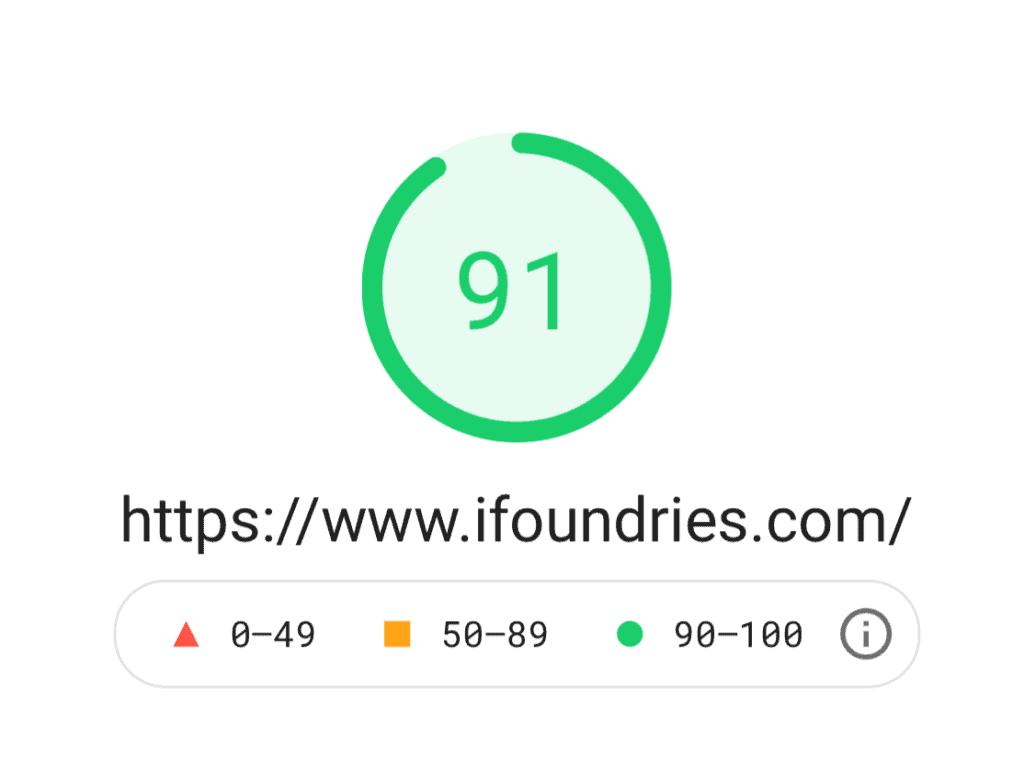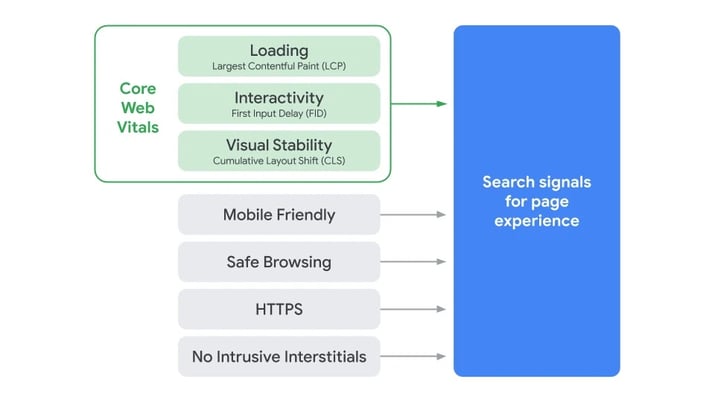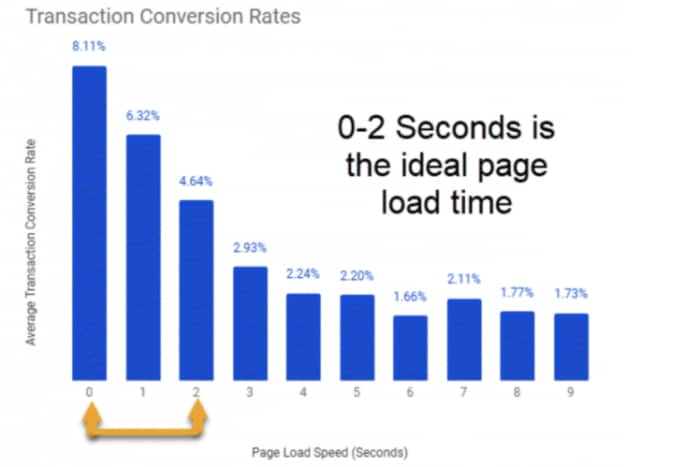Internet users including you and I, are impatient these days. We live in a fast-paced world.
When was the last time you abandoned a website because its page was taking too long to load?
Slow loading pages are an absolute no-go today.
A survey revealed that only 15 percent of sites have acceptable page speed!
The team at Unbounce surveyed almost 200 marketers and tested their websites against Google’s standards with the Test My Site tool.
The largest group, which was made up of 46% of respondents, owned or managed websites that took between 6-10 seconds to load – almost double Google’s recommended speed.
(Trinity.one)
Users don’t want to wait long to get the information they’re seeking.
You need your page to load within three seconds in order to keep your users contented and consuming your content, announced by Google.
Also, a fast loading speed is the only chance you get to land on the first page of Google search results. It’s not a secret that most users hardly get to the second page of results.

What is page speed?
Page speed is how fast it takes between the browser’s request for a page until the browser completes processing and fully displays the content, also called “time to first byte”. Factors that affect page speed include quantity and type of content, the distance the data travels, connection type, device, operating system, and browser.
You can evaluate your page speed with Google’s PageSpeed Insights.
If you’re not yet familiar with Google PageSpeed Insights, it’s a tool used for testing website performance. You can enter any URL and view an analysis report.
At the top of the report, PSI (PageSpeed Insights) provides a score that summarises the page’s performance. A score of 90 or above is considered good. 50 to 90 is a score that needs improvement, and below 50 is considered poor.
Do not confuse page speed with site speed! Site speed is the average of several sample pages on a website. Page speed, on the other hand, measures how fast a user has to wait to be able to view an individual page.

Why page speed matters?
Page speed is a critical factor in SEO, enables you to rank higher on Google’s search engine results.
Page speed affects the way users feel about a brand and its products and services.
And yet, most of us are missing the park when it comes to having a fast-performing website.
Along with looking at data that tracks actual user behavior, you can also turn to customers to understand the correlation between page speed and conversion rates. Data shared by Search Engine Journal found that almost 70% of customers believe that a slow website negatively affects their decision to buy.
A one-second delay in page load time will drop your conversion rate by 7%. This means that if your website drives $100,000 per day in sales, you could lose $2.5 million per year in lost conversions.
(Trinity.one)

How to ace your Google Page Speed score?
Compress your images
Yes, we understand that design and aesthetics matter a lot and the quality of images definitely do affect that. However, Google testers have warned website builders repeatedly about the ways that images can affect page speed.
Nevertheless, do not confuse quality pictures with high-resolution images.
You can still achieve the image quality you want without using the highest resolution available.
A great way to do this is to compress your images. You can use compression tools to reduce image size by up to 50 percent without compromising its quality.
If you use WordPress, one of the best ways to do this without spending much time is to use a plugin, like WP Smush Image.
If your website is not made on WordPress, there are still many other plugins available. While Crush.pics is an excellent tool for Shopify tools, Compress JPEG and Optimizilla are also great options.
Shrinking image size is one easy way to help your website shed some of this weight.
Alternatively, replacing a JPEG image with a PNG image file is the easiest way to shrink your image size and speed up your loading time.
Leverage free tools online like Compress JPEG or Optimizilla if you can’t use a plugin.
Remove or minimise CSS files, HTML, and JavaScript.
After a website revamp or redesign, many files are often expanded and laden with excess and unnecessary code on the backend.
CSS files often carry more than they need to, and this size has a huge impact on your load time.
Remove these unnecessary characters, spaces, and duplication and find that your page loads dramatically faster.
Google highly recommends taking the time to minify the code on the back-end of your website, including all CSS, JavaScript, and HTML components, using CSSNano and UglifyJS.
Similarly, rendering too many JavaScript scripts will slow a page down as well. A JavaScript compression or minimization tool decreases your download size.
Reduce redirects
Another turnoff for a website user aside from slow-loading pages, is many redirection to other pages when you click on the landing page link.
Not exactly user-friendly, right? To make matters worse, the delay isn’t SEO-friendly either.
The more redirects your pages has, the higher will be the page’s load speed. Eliminating unnecessary redirects from your page and apply a responsive design.
Each time a page redirects to another page, your visitor faces additional time waiting for the HTTP request-response cycle to complete, every redirection cumulatively makes your page load slower.
Some tips are to regularly scan your website for old redirects that lead to pages you deleted a long time ago, and never link to a page that you know has a redirect on it. Multiple redirects are a no-go.
Speed up server response time with a good hosting solution
Want to know the number one factor that can kill your website load speed? Poor hosting.
While a cheap hosting plan may seem like a great deal initially, you’re actually penny wise pound foolish.
That low price comes with slower than normal site speeds and frequent downtime during high traffic periods.
To ensure the best and most optimised performance, you need to invest in a premium hosting provider.
Google PageSpeed Insights recommends a sub-200ms server response time. A cheap web host will not give you that.
iFoundries hosting solution ensures that your website performance is optimised always, regardless of the amount of traffic, any day.
Leverage browser caching
Browser caching records all loaded resources such as logos and footers, so that it doesn’t have to reload them upon every single visit again.
Because caching will allow data to be stored, visitors to your website will have a better experience that will result in a big increase in speed when browsing.
With headers, you can set properties of your site’s cache behavior:
- No-cache – This prohibits caching. It is useful for updated pages, like news portals.
- Public – This enables caching on proxy servers.
- Private – This allows caching only for local usage.
- Max-age – This sets the expiration time in seconds.
- No-store – This means that your page contains some private data that can’t be stored.
(Moz)
You don’t need to be a coding expert to do this. There are tools available for it. For WordPress, you can use W3 Total Cache.
Leverage a content delivery network (CDN)
A Content Delivery Network (CDN), also referred to as a ‘content distribution network’, is a network of servers that can help improve page loading speed. It does this by hosting and delivering copies of your site’s static content from servers located across the globe.
The delay duration that occurs from the moment you request to load a web page to the moment its content actually appears is impacted by the physical distance between you and that website’s hosting server.
A CDN virtually shortens that physical distance, and as a result improves site rendering speed and performance.
A CDN works with, rather than in place of, your host. In addition to the server that hosts your primary website, you can leverage a CDN to distribute copies of your site’s files among strategically-chosen data centers.
You have a variety of CDN options to choose from, one of which is opting for a host that provides a CDN you can enable it directly from your own dashboard.
(Hubspot)

Conclusion
Emphatically, a website that’s faster and has reliable performance will convert much more users than a website that is not.
PageSpeed Insights and our measures above can help you figure out which areas you could be lacking in terms of user experience.
Not only will these measures help your PageSpeed Insights score, but they will also help improve your conversion rate.
If you need help on SEO, web hosting or any other site optimisation techniques, feel free to contact us for help with no obligations!





